Polar sea ice is both an indicator and a driver of global climate change. We now have over 40 years of satellite data (since the late 1970s) to directly monitor its evolution in concentration, area, and extent and almost 30 years (since the early 1990s) for its thickness.
In the Arctic, sea ice extent and volume have decayed in all seasons, with strongest reduction in late summer. This leads to a younger and more mobile sea ice cover in the Arctic Ocean. In the Southern Hemisphere, sea ice extent increased rather steadily until 2015, with much smaller coverage since 2016. The Special Report for a 1.5C Global Warming (IPCC SR15) documents that to limit global warming to 1.5C above pre-industrial levels could “substantially” reduce the risk of sea ice-free summers in the Arctic with respect to a 2C warming.
Although satellite observations are the foundation for most of our knowledge about the evolution of the global sea ice cover, progress is still acutely needed to improve the observations of the Sea Ice Essential Climate Variable, in particular to achieve better spatial resolution, better consistency across satellite missions and longer time series.
Objective
The ultimate objective of Sea Ice_cci is to advance the retrieval capability for two main variables of the Sea Ice Essential Climate Variable (ECV): Sea ice concentration and sea ice thickness. Our research plan was designed to approach the GCOS requirements and maximize the impact of CCI research to operational climate information services.
For sea ice concentration (SIC), our efforts will be towards improving the spatial resolution of the Climate Data Records, by using the high-frequency channels available on the microwave radiometry missions since 1992. Starting with SSM/I F10, we now have an almost 30-year time series with frequencies around Sea Ice CC90 GHz. They offer higher spatial resolution, but also lead to larger retrieval uncertainties compared to the “classic” frequency channels available since the late 1970s. We will develop innovative algorithms that will combine all frequency channels and balance between higher spatial resolution and lower accuracy. In addition, we will attempt to retrieve sea ice cover information from the legacy ESMR instrument on board Nimbus-5 (1972-1977). ESMR was a pioneering instrument and dedicated algorithms must be developed. All our SIC developments are coordinated with those of the EUMETSAT Ocean and Sea Ice Satellite Application Facility (OSI SAF, osisaf.met.no).
For sea ice thickness (SIT), one of our main objectives is to consistently extend the existing Envisat+Cryosat2 time series (2002-present) with data from ERS-1 and ERS-2 missions (1993 onwards). This is a challenging task due to the difference in technology between ERS and Envisat (ERS recorded blurred, lower-resolution pulses wrt Envisat). Another challenge is our incomplete knowledge of the snow cover since the early 1990s. Indeed, snow plays a crucial role in observing sea ice thickness using space-borne altimeters, both for radar penetration, and conversion from freeboard to thickness. Other general algorithm developments, such as better uncertainty characterization, and gap-filling of the large polar observation hole (north for 81N for most of the period) will be tackled. All our SIT developments are coordinated with those of the Copernicus Climate Change Service (C3S).
About the project
The objectives described above are ambitious, and will not be addressed up-front. We rather designed a series of three 1-year development cycles to gradually develop the algorithms, and prepare better climate data records.
Each yearly phase will include the following steps:
- Update user requirements
- Algorithm developments
- Prototype software and process data
- Scientific validation
- Climate assessment
A series of deliverables (documents and datasets) will be released throughout the project.
Sea Ice CCI now enters a 3rd project phase, the first under the "CCI+" umbrella. Previous two phases involved many of the same partners, and was led by S. Sandven (NERSC, NO).
Sea Ice Area Fraction in Percent (June 2002 – May 2017) version 2.1
A list of all our CCI Sea Ice products (including old/deprecated versions) is available in the CEDA Catalogue: https://catalogue.ceda.ac.uk/uuid/5e789087d4e847308a39b3fe5b26e281
The Sea Ice consortium is based on a close collaboration between several partner organisations.
Publications list for the CCI Sea Ice project.
Kolbe, W. M., Tonboe, R. T., and Stroeve, J.: Mapping of sea ice concentration using the NASA NIMBUS 5 Electrically Scanning Microwave Radiometer data from 1972–1977, Earth Syst. Sci. Data, 16, 1247–1264, https://doi.org/10.5194/essd-16-1247-2024, 2024.
Tonboe, R. T., Nandan, V., Mäkynen, M., Pedersen, L. T., Kern, S., Lavergne, T., Øelund, J., Dybkjær, G., Saldo, R., and Huntemann, M.: Simulated Geophysical Noise in Sea Ice Concentration Estimates of Open Water and Snow-Covered Sea Ice, IEEE Journal of Selected Topics in Applied Earth Observations and Remote Sensing, 15, 1309–1326, https://doi.org/10.1109/JSTARS.2021.3134021, 2022.
Kern, S., Lavergne, T., Pedersen, L. T., Tonboe, R. T., Bell, L., Meyer, M., and Zeigermann, L.: Satellite passive microwave sea-ice concentration data set intercomparison using Landsat data, The Cryosphere, 16, 349–378, https://doi.org/10.5194/tc-16-349-2022, 2022.
Kern, S.: Spatial Correlation Length Scales of Sea-Ice Concentration Errors for High-Concentration Pack Ice, Remote Sensing, 13(21), 4421, doi:10.3390/rs13214421, 2021.
Tonboe, R. T., Nandan, V., Yackel, J., Kern, S., Pedersen, L. T., and Stroeve, J.: Simulated Ka- and Ku-band radar altimeter height and freeboard estimation on snow-covered Arctic sea ice, The Cryosphere, 15, 1811–1822, https://doi.org/10.5194/tc-15-1811-2021, 2021.
Khvorostovsky, K., Hendricks, S. and Rinne, E.: Surface Properties Linked to Retrieval Uncertainty of Satellite Sea-Ice Thickness with Upward-Looking Sonar Measurements, Remote Sensing, 12(18), 3094, https://doi.org/10.3390/rs12183094, 2020.
Kern, S., Lavergne, T., Notz, D., Pedersen, L. T., and Tonboe, R.: Satellite passive microwave sea-ice concentration data set inter-comparison for Arctic summer conditions, The Cryosphere, 14, 2469–2493, https://doi.org/10.5194/tc-14-2469-2020, 2020.
Burgard, C., Notz, D., Pedersen, L. T., and Tonboe, R. T.: The Arctic Ocean Observation Operator for 6.9 GHz (ARC3O) – Part 1: How to obtain sea ice brightness temperatures at 6.9 GHz from climate model output, The Cryosphere, 14, 2369–2386, https://doi.org/10.5194/tc-14-2369-2020, 2020.
Burgard, C., Notz, D., Pedersen, L. T., and Tonboe, R. T.: The Arctic Ocean Observation Operator for 6.9 GHz (ARC3O) – Part 2: Development and evaluation, The Cryosphere, 14, 2387–2407, https://doi.org/10.5194/tc-14-2387-2020, 2020.
Kern, S., Lavergne, T., Notz, D., Pedersen, L. T., Tonboe, R. T., Saldo, R., and Sørensen, A. M.: Satellite passive microwave sea ice concentration data set intercomparison: closed ice and ship-based observations, The Cryosphere, 13, 3261–3307, https://doi.org/10.5194/tc-13-3261-2019, 2019.
Sallila, H., Farrell, S. L., McCurry, J., and Rinne, E.: Assessment of contemporary satellite sea ice thickness products for Arctic sea ice, The Cryosphere, 13, 1187-1213, https://doi.org/10.5194/tc-13-1187-2019, 2019.
Lavergne, T., Sørensen, A. M., Kern, S., Tonboe, R., Notz, D., Aaboe, S., Bell, L., Dybkjær, G., Eastwood, S., Gabarro, C., Heygster, G., Killie, M. A., Brandt Kreiner, M., Lavelle, J., Saldo, R., Sandven, S., and Pedersen, L. T.: Version 2 of the EUMETSAT OSI SAF and ESA CCI sea ice concentration climate data records, The Cryosphere, 13, 49-78, https://doi.org/10.5194/tc-13-49-2019, 2019.
Korosov, A. A., Rampal, P., Pedersen, L. T., Saldo, R., Ye, Y., Heygster, G., Lavergne, T., Aaboe, S., and Girard-Ardhuin, F.: A new tracking algorithm for sea ice age distribution estimation, The Cryosphere, 12, 2073-2085, https://doi.org/10.5194/tc-12-2073-2018, 2018.
Paul, S., Hendricks, S., Ricker, R., Kern, S., and Rinne, E.: Empirical parametrization of Envisat freeboard retrieval of Arctic and Antarctic sea ice based on CryoSat-2: progress in the ESA Climate Change Initiative, The Cryosphere, 12, 2437-2460, https://doi.org/10.5194/tc-12-2437-2018, 2018.
Lu, J., Heygster, G., and Spreen, G.: Atmospheric Correction of Sea Ice Concentration Retrieval for 89 GHz AMSR-E Observations, IEEE J-STARS., 11, 1442–1457, https://doi.org/10.1109/JSTARS.2018.2805193, 2018.
Kern, S., and B. Ozsoy-Cicek: Satellite remote sensing of snow depth on Antarctic sea ice: An inter-comparison of two empirical approaches, Rem. Sens., 8(6), 450, doi:10.3390/rs8060450, 2016.
Schwegmann, S., Rinne, E., Ricker, R., Hendricks, S., and Helm, V.: About the consistency between Envisat and CryoSat-2 radar freeboard retrieval over Antarctic sea ice, The Cryosphere, 10, 1415-1425, https://doi.org/10.5194/tc-10-1415-2016, 2016.
Kern, S., B. Ozsoy-Cicek, and A. P. Worby: Antarctic sea ice thickness retrieval from ICESat: Inter-comparison of different approaches, Rem. Sens., 8(7), 538, https://doi.org/10.3390/rs8070538, 2016.
Kern, S., A. Rösel, L. T. Pedersen, N. Ivanova, R. Saldo, and R. T. Tonboe, The impact of melt ponds on summertime microwave brightness temperatures and sea ice concentrations, The Cryosphere, 10(5), 2217-2239, https://doi.org/10.5194/tc-10-2217-2016, 2016.
Ivanova, N., L. T. Pedersen, R. T. Tonboe, S. Kern, G. Heygster, T. Lavergne, A. Sorensen, R. Saldo, G. Dybjkaer, L. Brucker, and M. Shokr: Inter-comparison and evaluation of sea ice algorithms: towards further identification of challenges and optimal approach using passive microwave observations, The Cryosphere, 9, 1797-1817, https://doi.org/10.5194/tc-9-1797-2015, 2015.
Kern, S., and G. Spreen: Uncertainties in Antarctic sea ice thickness retrieval from ICESat, Ann Glaciol., 56(69), 107-119, https://doi.org/10.3189/2015AoG69A736, 2015.
Kern, S., K. Khvorostovsky, H. Skourup, E. Rinne, Z. S. Parsakhoo, V. Djepa, P. Wadhams, and S. Sandven: The impact of snow depth, snow density, and ice density on sea ice thickness retrieval from satellite radar altimetry: Results from the ESA-CCI Sea Ice ECV Project Round Robin Exercise, The Cryosphere, 9(1), 37-52, https://doi.org/10.5194/tc-9-37-2015, 2015.
Mäkynen, M., S. Kern, A. Rösel, and L. T. Pedersen: On the Estimation of Melt Pond Fraction on the Arctic Sea Ice with ENVISAT WSM Images, Trans. Geosci. Rem. Sens., 52(11), 7366-7379, https://doi.org/10.1109/TGRS.2014.2311476, 2014.
Other related publications by our team
Quartly, G.D.; Rinne, E.; Passaro, M.; Andersen, O.B.; Dinardo, S.; Fleury, S.; Guillot, A.; Hendricks, S.; Kurekin, A.A.; Müller, F.L.; Ricker, R.; Skourup, H.; Tsamados, M. Retrieving Sea Level and Freeboard in the Arctic: A Review of Current Radar Altimetry Methodologies and Future Perspectives. Remote Sens. 2019, 11, 881.
Gerland, S., D. Barber, W. N. Meier, C. J. Mundy, M. Holland, S. Kern, Z. Li, C. Michel, D. Perovich, and T. Tamura: Essential gaps and uncertainties in the understanding of the roles and functions of Arctic sea ice, Environmental Research Letters, 14(4), https://iopscience.iop.org/article/10.1088/1748-9326/ab09b3, 2019.
Krumpen, T., Belter, J., Boetius, A., Damm, E., Haas, C., Hendricks, S., Nicolaus, M., Noethig, E. M., Paul, S., Peeken, I., Ricker, R. and Stein, R. (2019): Arctic warming interrupts the Transpolar Drift and affects long-range transport of sea ice and ice-rafted matter, Scientific Reports, (9). https://doi.org/10.1038/s41598-019-41456-y
Jena, B., A. Kumar, M. Ravichandran, and S. Kern: Mechanisms of sea ice expansion in the Indian Ocean sector of Antarctica: Insights from satellite observation and model reanalysis, PLoS ONE 13(10): e0203222, https://doi.org/10.1371/journal.pone.0203222, 2018.
Li, H., H. Xie, S. Kern, W. Wan, B. Ozsoy, S. Ackley, and Y. Hong: Spatio-temporal variability of Antarctic sea ice thickness and volume obtained from ICESat data using an innovative algorithm, Remote Sensing of Environment, 219, 44-61, https://doi.org/10.1016/j.rse.2018.09.031, 2018.
Links relating to the Sea Ice ECV project.
Round-Robin Data Package (SIC RRDP)
SICCI-25km v2.1 (2017)
SICCI-50km v2.1 (2017)
OSI-450 (2017) and OSI-430-b (ICDR)
Sea Ice Thickness
- Envisat Monthly (NH, SH), and Swath data (NH, SH) (2018)
- CryoSat-2 Monthly (NH, SH), and Swath data (NH, SH) (2018)
- Envisat and CryoSat-2 NH (ICDR)
A list of all our CCI Sea Ice products (including old/deprecated versions) is available in the CEDA Catalogue: https://catalogue.ceda.ac.uk/uuid/5e789087d4e847308a39b3fe5b26e281
The following people can be contacted within the Sea Ice project.
- Scientific Leader: Thomas Lavergne – thomas.lavergne@met.no
- ESA Technical Officer: Anna Maria Trofaier – anna.maria.trofaier@esa.int
To run this example yourself, go to https://dashboard.climate.hub-otc.eox.at/. You can register for free.
Latest news & events

New Position: Junior Professional in AI for Climate Science
Opportunity for early-career Artificial Intelligence talent to join ESA’s Actionable Climate Information Section
Mehr erfahren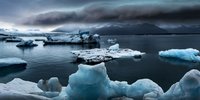
Update of the Nimbus-5 ESMR sea ice concentration dataset
Significant improvements in data quality and quantity
Mehr erfahren
Working for ESA: procurement and proposal submission process
An Introduction to ESA Star - ESA's System for Tendering and Registration
Mehr erfahren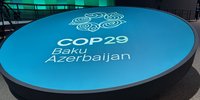
ESA at COP29
ESA is participating in COP29 to highlighting satellites' role in tackling climate change
Mehr erfahren

Call for new projects: Additional Essential Climate Variables
New R&D procurement as part of ESA's CLIMATE-SPACE programme
Mehr erfahren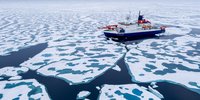
Ocean Salinity Conference 2024
The 7th International Ocean Salinity Science Conference, happening alongside the ESA CCI Salinity
Mehr erfahren
Open Competitive Tender for CLIMATE-SPACE Knowledge Exchange
ESA Tender Action Number: 1-12141. ESA Activity Number: 1000039650.
Mehr erfahren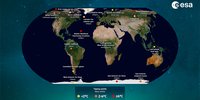
Satellites a ‘clear opportunity’ for forewarning of climate tipping points
New research offers guidance on how remote sensing can help understand and detection tipping systems
Mehr erfahren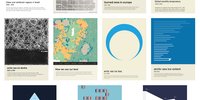
Little Pictures winner announced at COP28
Results of Europe-wide climate data visualisation showcased
Mehr erfahren
New Tender: CROSS-ECV ACTIVITIES Tender Action Number: 1-12062
New tender issued by the ESA Climate Office (Activity Number: 1000039196)
Mehr erfahren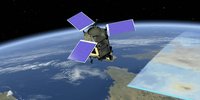
Harnessing Earth Observation for Climate Action
ESA in conversation Prof Jim Skea with IPCC Chair during the COP28 Earth Information day
Mehr erfahren






